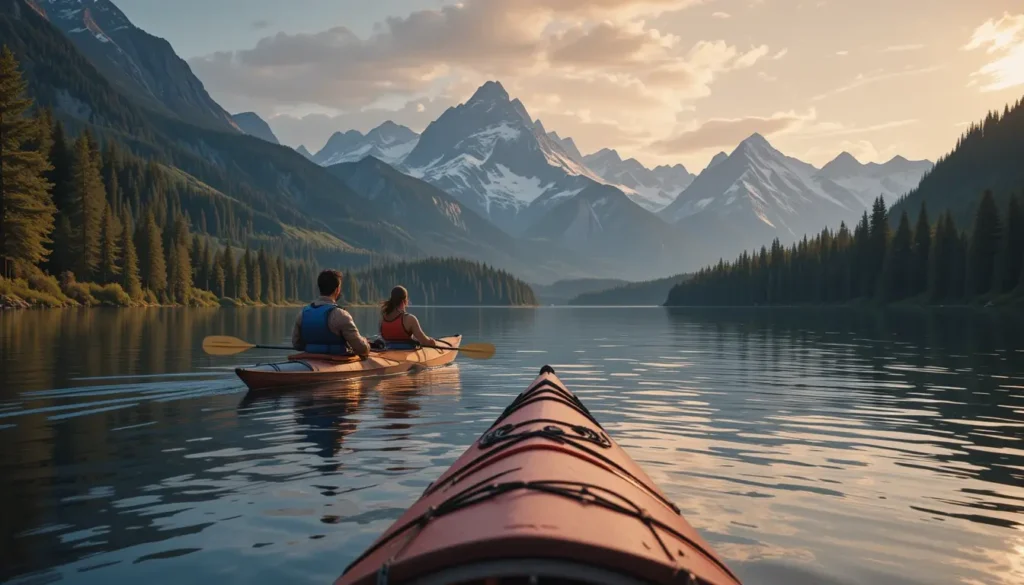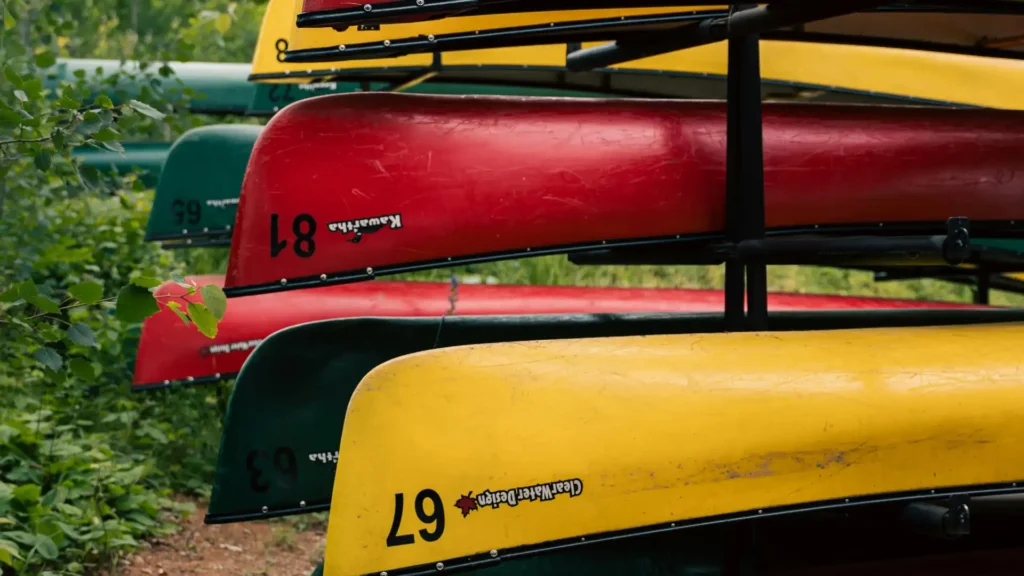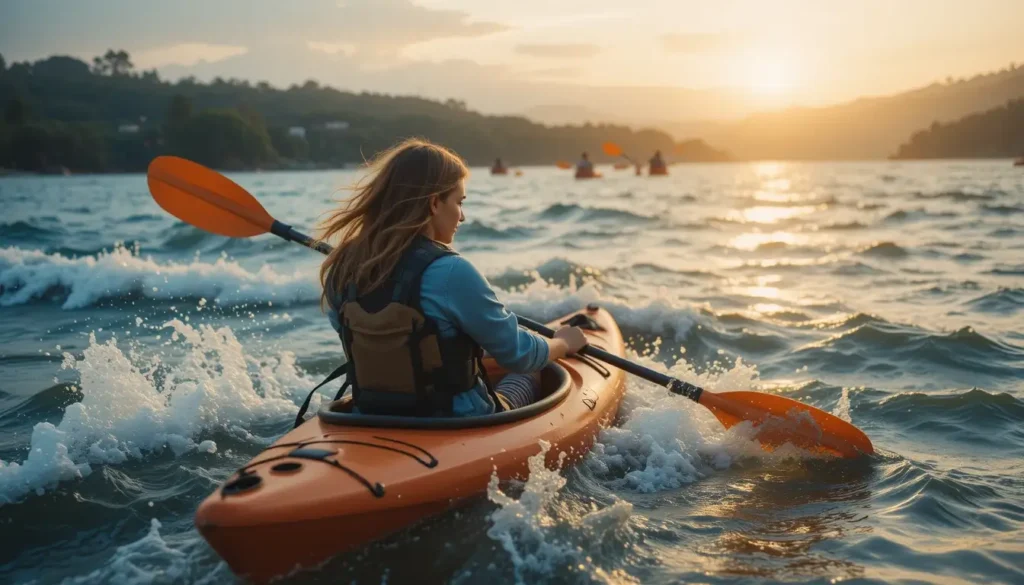You’re about to paddle for hours—maybe days—without a motor, without shortcuts, and without help if you burn out. You can’t fake it. Your arms, your back, and your mind need to be ready before you launch. Long-distance kayaking sounds fun, but it can break you if you’re not prepared.
You’re not training to win a race. You’re training to last. Your goal is to move far, stay safe, and enjoy the trip. If you train the right way, the journey gets smoother, and your body stops fighting you.
This guide shows how to get there. It covers the prep that matters. No fluff. No gear talk. Just what your body and brain need before a long trip on the water.
Start With Your Base
If your core is weak, everything else suffers. That’s not a theory. It shows up fast when you paddle all day. Your back aches, your shoulders lock up, and your speed drops.
Most new paddlers focus on arms. That’s a mistake. Your arms move the paddle, but your core drives the stroke. If your middle is soft, every stroke wastes energy.
Training your core means doing it before you touch the water. Start with simple moves: planks, bridges, leg raises. These aren’t fancy, but they build strength where it counts. You don’t need equipment or a gym. Just floor space and time.
Planks teach your core to stay stable while the rest of your body works. Hold for 20 seconds at first. Add five seconds each week. Front planks, side planks, and reverse planks all matter.
Bridges help fire the muscles behind you. They support your lower back and hips. Lie flat, lift your hips, squeeze at the top, then lower slow. You’ll feel it in seconds.
Add leg raises next. Lie on your back. Keep your legs straight. Raise and lower with control. Don’t rush. You’re training control, not speed.
You also need balance drills. Use a balance board or sit on a stability ball. Your kayak won’t always stay flat, so your body must adjust without effort. Start with sitting still. Then shift weight side to side. Your goal is control, not motion.
Stability work teaches your body to react before your brain can. It reduces the chance of tipping in strong current or when you’re tired. It also makes your paddling smoother.
This doesn’t take hours. Ten to twenty minutes a day is enough to make progress. The key is doing it often and making it a habit. You don’t need to feel sore. You just need to show up.
Put it in your morning or night routine. Set a timer. Do the same moves for two weeks. Then change one or two and keep going. This base work gives you more than strength—it gives you control, safety, and longer time on the water without fatigue.
Build Endurance First
You won’t need speed on a long trip. You’ll need stamina. Long-distance kayaking is a test of how long you can stay in motion. The water will keep moving. You have to keep up.
Start with cardio off the water. Use a rowing machine if you have one. If not, walk, jog, or bike. Go slow, but go long. Train your heart to last.
The goal isn’t to push hard. It’s to stay active for longer and longer periods. Think about time, not distance. Your body learns to last through repetition.
A rowing machine is great because it mimics paddling posture. But any steady cardio works. Walk for one hour. Ride a bike on flat roads. Swim laps at your pace. It all helps your lungs and blood flow.
Go three times a week. Pick any two days off. Your sessions should last 45 to 60 minutes. You should sweat, but still be able to talk. That’s the right zone.
As you build, track your time and how you feel after. Can you paddle longer with less soreness? That’s a sign your endurance is improving. If your recovery is faster, you’re on track.
Add real paddling later. Find a nearby lake or calm river. Paddle at a steady pace for one hour. Then go longer. Your goal is to train your body to stay active without breaking down. Don’t focus on speed yet. Focus on rhythm and breathing.
Bring water. Stop only if you must. Paddle as if you’re on the real trip. Notice how your body reacts after 30 minutes. That’s the wall you want to push past.
Endurance is built in layers. The first week is hard. The second is better. By week four, your muscles know what to do. Your heart won’t panic, and your breath won’t race. That’s when paddling starts to feel good.
Track your sessions. Write down how far you went and how you felt. Look for progress each week. If you feel stronger, you’re doing it right. If you don’t, tweak the pace or add more rest. Stay consistent. The distance you can handle will surprise you.
Don’t Skip Strength
You’ll be carrying gear, lifting the kayak, and dragging it across mud or sand. That means you need muscle—not just endurance.
Start with your own body weight. Pushups build shoulder and chest strength. Squats and lunges strengthen your legs and hips. Rows target your upper back. These moves prepare your whole body.
If you want more, add resistance bands or dumbbells. These tools add challenge without needing a gym. They help build muscle safely and steadily.
Focus on your shoulders, arms, and upper back. These are the main paddling muscles. But don’t forget your legs. They help you brace and balance in rough water. Strong legs keep you stable and prevent slips.
Do two strength sessions per week. Each one should last 30 to 45 minutes. Take breaks between sets to avoid injury. Good form matters more than lifting heavy weights.
Building muscle this way keeps you from getting hurt. It helps you control your kayak when the water gets tough. Muscle won’t win the trip, but it protects the parts that do.
Practice Paddle Control
Your technique decides how fast you go and how tired you get. If your paddle form is off, your body pays for it. Don’t wait until your trip to fix bad habits.
Practice your stroke regularly. Watch your arms, elbows, and torso. Your power should come from your core, not just your arms.
Take a short video of yourself paddling. Watch it closely. Compare it to a pro video. Fix one thing at a time. Don’t try to fix everything in one day.
Drills make a difference. Practice paddling in a straight line. Then work on tight turns. Try stopping quickly. If possible, practice paddling in wind or mild current.
Speed is not the goal at first. You need control and rhythm. A smooth stroke saves energy. That’s what keeps you moving when you’re 20 miles from shore.
It’s not just your body that needs training. Your gear and habits do too. Use short trips to test everything you plan to take on the long trip.
Try a weekend paddle with all your gear packed. Load your boat exactly as you will for the full trip. Carry it, drag it, and launch it. This helps your body and mind get ready for the extra weight.
Paddle with the full load. Notice how your kayak moves. It will feel slower and turn wider. Getting used to that feeling is important.
Test your food and water on these trips. Eat and drink during the paddle. See which foods settle well in your stomach. Learn how much water you need for five hours on the water. You can’t guess this; you have to feel it.
Use these short trips to test your clothes too. Check if your shoes rub after four hours. See if your dry bags hold up. Small problems become big when you’re far from help.
After each test trip, make a checklist. Write down what worked and what didn’t. Fix everything before your real trip.
Train Your Mind
Long-distance paddling is mental. Boredom, discomfort, and doubt show up before pain does. If your head isn’t ready, your body will quit early.
You need mental habits that keep you focused. Break your trip into small chunks. Think about the next bend, not the next 30 miles.
Use breath control when stress builds. Inhale for four counts. Exhale for six. Repeat this rhythm. It calms your body fast.
Play small mental games. Count your paddle strokes to 100. Sing a song silently. These tricks keep your brain from drifting into fatigue or fear.
Expect discomfort. You will get sore and tired. That doesn’t mean something is wrong. It means you are doing the work.
Train your brain during workouts. When you want to stop, paddle five more minutes. When the weather changes, keep going. These moments matter more than perfect form.
Before your real trip, do a full-day paddle. No breaks for hours. No rescue if you mess up. Just you, your kayak, and the water.
Start early. Paddle until lunch. Rest and eat. Then paddle again.
Track your pace and distance. Check your food and hydration plan. Notice what parts of your body ache. Take notes.
This day tells you the truth. It shows if your training worked. It shows if your plan makes sense. And it shows what needs fixing.
After that, rest for two days. Let your body recover. Then fix your weak spots and repeat.
Do at least two full-day paddles before your big trip. That’s your final test. If you can do those, you’re ready.
Don’t train for perfection. Train for readiness. You’re not trying to set records. You’re trying to finish strong, stay safe, and enjoy the ride.
Long-distance kayaking is hard. But it’s not beyond you. It just takes smart prep, honest testing, and time on the water.
Build your base. Train your body. Train your mind. Run your tests. Fix your weak spots.
Then go.
Your trip won’t go exactly as planned. That’s the point. You’ll learn as you move. But if you’ve trained right, you’ll keep moving.
And that’s what matters most.




